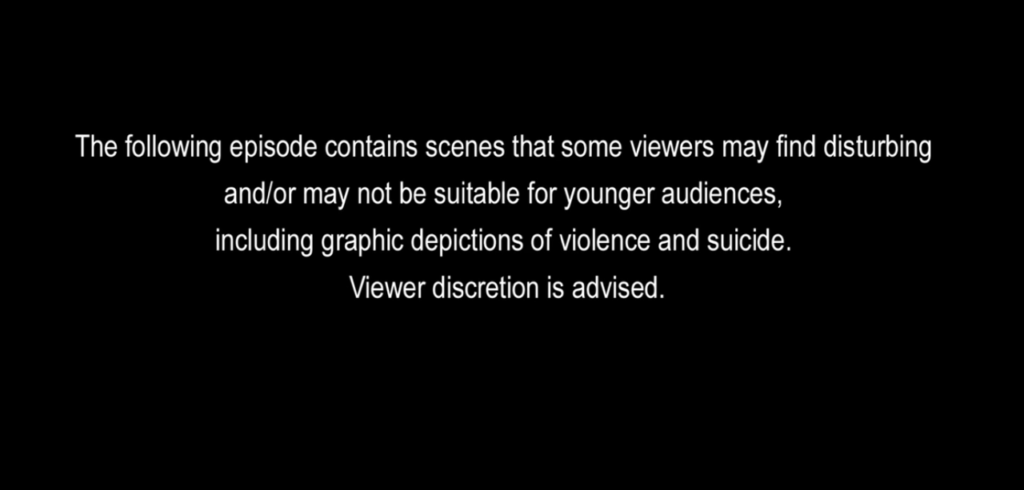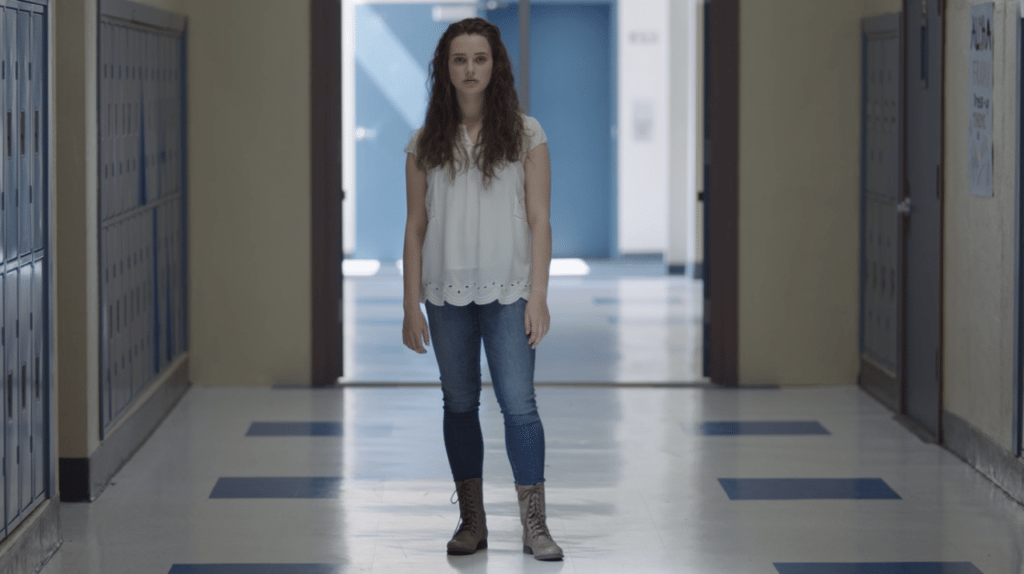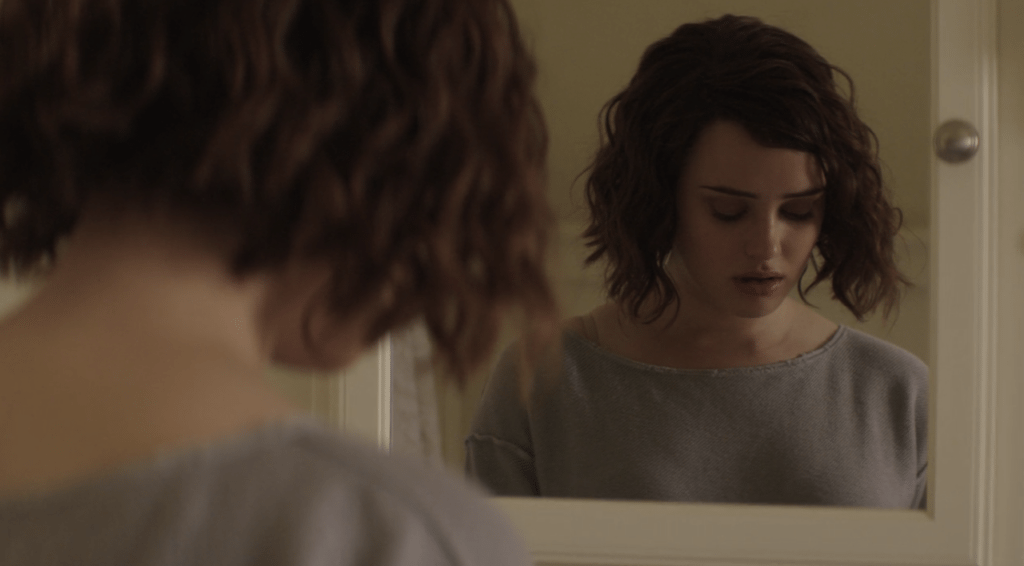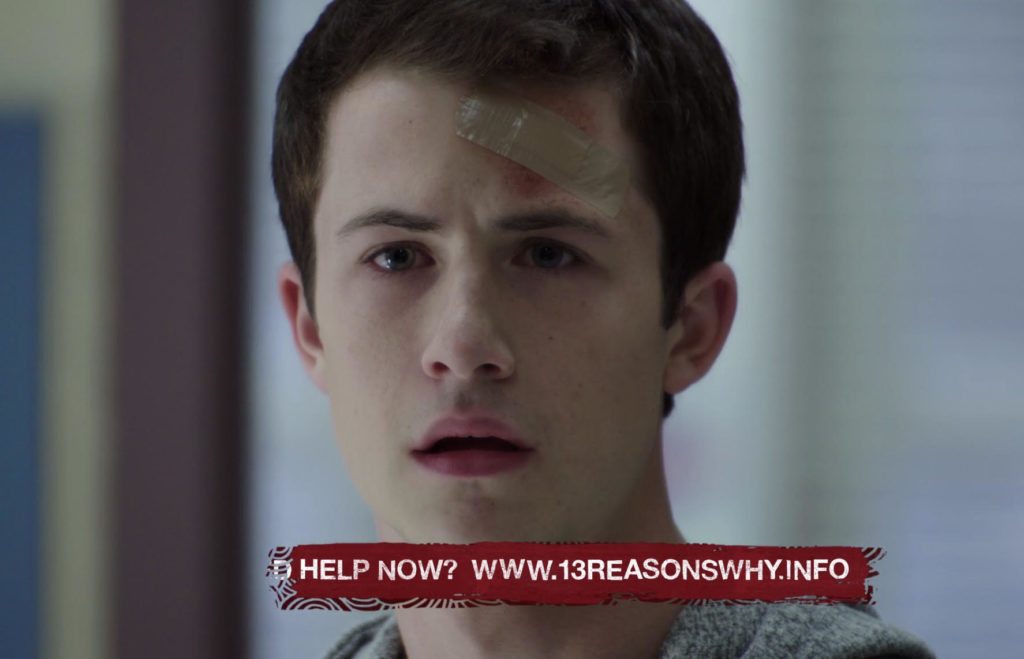Content Warning: Discussion of suicidal ideation, death, and violence.

The following episode contains scenes that some viewers may find disturbing and/or may not be suitable for younger audiences, including graphic depictions of violence and suicide. Viewer discretion is advised.
This was the warning that preceded the finale of Netflix’s adaptation of Jay Asher’s novel 13 Reasons Why. It was incredibly vague. It addressed “some viewers,” like there is a viewing audience that wouldn’t find “graphic depictions of violence and suicide” disturbing.
Trigger warnings provide a buffer for the viewer, a means to prepare and compartmentalise before being faced with difficult or disturbing content, as opposed to the content hitting the viewer with little to no warning. Even if the viewer chooses not to consume media based on its content, that is well within their rights to do so.
If one show was desperately in need of a more adequate trigger warnings, it’s 13 Reasons Why.

13 Reasons Why—both the original novel and the Netflix adaptation—revolves around the narrative of thirteen tapes, left behind after Hannah Baker’s suicide. Each of the thirteen “reasons” is dedicated to a person who, in Hannah’s view, is partially responsible for her suicide. The Netflix adaptation is currently garnering both criticism and praise for its raw portrayal of teen suicide, sexual assault, rape, and bullying, among other issues. Some are praising 13 Reasons Why’s brutal confrontation of these difficult topics. Others argue that these issues could have been handled much more responsibly. Regardless, the show is incredibly difficult to watch.
Until this point in my life, I have never been triggered by any media. This doesn’t mean I don’t advocate for triggers and their importance. Understanding how trigger warnings are beneficial to others, even if you don’t usually need them, falls under the categories of having empathy and just not being a dick. However, for the first time in my life, I would have appreciated a trigger warning for my own viewing experience. I had an unexpectedly visceral reaction to Hannah’s suicide scene.
As I watched, I trembled. I felt chills. I dry heaved. I felt nauseated and scatter-brained for hours after I finished viewing. I was taken aback by my own reaction. Why did I react the way I did? I pondered this to myself for several hours. Was it the gore? No. On-screen blood has never had much of an impact on me. The show is also blatantly, from the beginning, about a girl who dies by suicide, so you could argue I knew exactly what I was signing up for. What made this scene so difficult for me to stomach? Why did I feel so unprepared?

In all honesty, I saw myself in that scene. I saw how my life would have turned out had one thing gone differently. If I had gone through with one of my multiple suicide attempts, if my human survival instincts hadn’t kicked in at the right moment, or if I hadn’t reached out. If something had happened differently up to this point, you would not be reading this essay right now. Plain and simple.
Hannah’s death was raw. There was no music, no fanfare. It was extremely drawn out and detailed. The viewer saw every opportunity for Hannah to change her mind. From the method, down to Hannah’s very last sobbing breaths, the viewer was faced with a portrayal of suicide that is very difficult to shy away from.
According to the behind the scenes featurette (which, in my opinion, should have been an additional episode to help the viewer process the content of the series), the scene was shot this way on purpose. The creators explain how Hannah’s suicide was not meant to be glorified. This explains why the method changed from the novel (pill overdose) to the Netflix adaptation (wrist cutting.) I still doubt if I can understand and endorse this choice. All death by suicide is tragic, regardless of the method. Is it necessary for the creators to choose one of the goriest, bloodiest methods to make a point?
There may be an audience that still needs to be convinced that suicide is tragic. This scene is likely effective for that audience. Yet viewers who have a personal history with suicide, whether they knew a victim or are survivors themselves, are thinking, “No shit, Sherlock. Of course, suicide shouldn’t be glorified. There is nothing glorious about it.”
A considerable portion of the audience for 13 Reasons Why was drawn to this story because they, in some way, relate to Hannah’s experience. As opposed to Asher’s original novel, the Netflix adaptation takes the opportunity to provide more detail and flesh out characters. Much of Hannah’s story is all the more powerful for being seen, rather than read. Overall, I’m grateful for all involved in this show for not devaluing or invalidating the issues highlighted. However, the opportunity to add on to the original story came with a myriad of choices. When making these choices, the show’s allegiance should have been with those who have previously struggled and (especially) are currently struggling with suicidal thoughts and tendencies.
By trying not to glorify Hannah’s suicide scene, it was in turn sensationalized. Hannah’s suicide scene came off as torture porn and incredibly indulgent, opting to make headlines and shock audiences over helping and advocating for suicidal viewers. The scene infamously goes against the American Foundation for Suicide Prevention’s guidelines. These guidelines include avoiding “big or sensationalistic headlines” and “including photos/videos of the location or method of death.” The purpose of these guidelines is to prevent suicide contagion, the phenomenon where exposure to suicide increases risk for suicide.

In addition, the guidelines recommend including hotline and crisis numbers. The featurette included a plug for their own website, which lists resources sorted by region. This would have been helpful if the viewer didn’t have to dig for it. While well-intended, this information would have been more beneficial if it were included at the beginning of every episode. This would have brought utilising resources to the forefront of the series, rather than being thrown into the featurette as an afterthought. Along with hotline and crisis lines, the trigger warnings preceding each episode should have been less generic and personalised to each episode. Some episodes didn’t have them at all, even though they were needed, such as the scene where Clay hallucinates Hannah lying dead in the middle of a basketball court. In terms of preparing the viewer, or giving them the chance to opt out, the viewer discretion warnings in this show were inadequate.
While 13 Reasons Why is incredibly powerful and sparking an important dialogue, I would advise viewers to proceed with caution. This is especially true if they are struggling and vulnerable. At the end of the day, it’s up to the viewer to decide what they can and can’t handle. Just don’t count on the viewer discretion warnings to adequately prepare you for the content.

